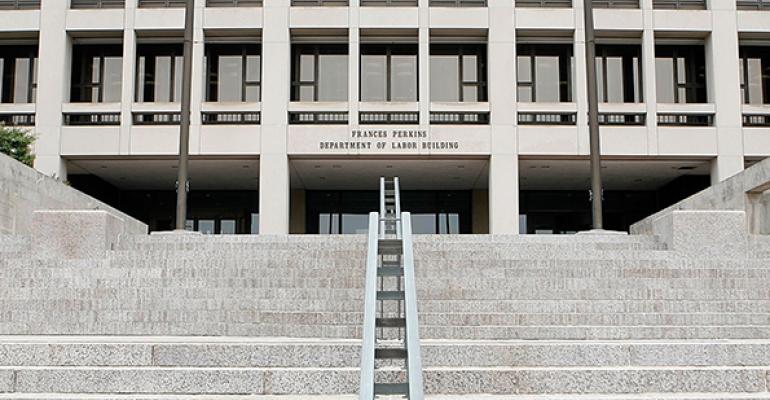The Department of Labor’s proposed fiduciary rule could cost firms almost $5 billion to implement and an additional $1.1 billion in annual expenses, according to a new analysis by an industry trade group.
In a comment letter filed Monday, the Securities Industry and Financial Markets Association provided estimates based on a survey of 40 of its large and mid-sized broker/dealers member firms. Kent Bentsen, SIFMA’s president and CEO, said on Monday that in formulating their analysis, the Labor Department “woefully” underestimated how much the rule would cost firms.
The DOL also failed to show how this proposal would benefit investors in a quantitative way, SIFMA contends. “It has no study data to compare the performance of accounts managed by a fiduciary versus a non-fiduciary and cannot reasonably conclude that investors would be better off under an expanded fiduciary standard on the basis of the studies cited,” the organization's letter states.
In its initial April rule proposal, the DOL estimated the implementation could total between $2.4 billion and $5.7 billion over the next 10 years.
The agency drew its analysis from a report submitted by SIFMA in response to the SEC’s request for information. The industry group surveyed 18 of its members (12 large broker/dealers and six regional broker/dealers), who estimated it would cost between $5 and $6 million to implement and between $1 and $2 million in annual maintenance.
But SIFMA argues that estimate is flawed. “The Department’s estimate was based on a narrow dataset that was never intended to measure costs for compliance with this proposal,” the organization’s letter notes.
In addition to the comment letter, SIFMA submitted a 54-page cost study by Deloitte on the operational impacts to b/ds, as well as an analysis by the National Economic Research Associates that found, among other issues, the DOL misapplied the academic research around investor costs and behaviors.
The Deloitte study found that the rule was “unfeasible or impossible for firms to operationalize and to comply with the regulation,” according to Tom Price, SIFMA’s managing director of operations and technology.
SIFMA also surveyed small firms, with many of them stating they would need to rely on third-party or clearing firms to implement the rule, making it difficult to calculate standardized costs.
SIFMA is not the first to raise concerns regarding the rule’s cost to firms. The U.S. Chamber of Commerce also considered the Labor Department’s estimates to be low, according to its recently filed comment letters.
The organization takes issue with the Labor Department’s estimate that in-house attorneys at brokerage firms will spend 60 hours drafting the necessary disclosures required under the rule’s Best Interest Contract Exemption, which would allow brokers to charge commissions and operate under other previously prohibited compensation structures.
The Chamber of Commerce contends that the agency “appears to have pulled the 60 hours out of nowhere," and that the DOL’s projected labor costs and IT requirements are also not substantiated.
Mark Casady, LPL Financial’s Chairman and CEO, told WealthManagement.com last month he also had concerns regarding the costs of implementing the Labor Department’s rule as currently proposed. “There are definitely going to be added costs to comply with all this regulation, and it’s going to make its way to the consumer in one form or another. We certainly think they’re going to be substantial to create the technology that’s needed, but we’re still trying to define what substantial means [in this context].”
Additionally, FINRA released its comment letter on Friday, calling out the proposed rule’s ambiguities, saying the DOL’s rule provides a “fractured approach” that, in some cases, conflicts with current rules and regulations.
“The proposal does not incorporate existing regulation and introduces new concepts that are fraught with ambiguity. We urge the Department to consider that these ambiguities will frustrate the ability of a financial institution and advisers to comply with the proposal,” the letter states.





